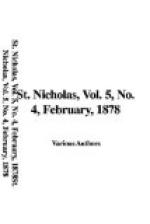Green tea, although grown in particular districts, receives its peculiar color by being stirred with a mixture of gypsum and Prussian blue during the firing, but is prepared in a more laborious manner, the leaves being selected and divided to form the different kinds known as Imperial, Gunpowder, Young Hyson, Hyson, Hyson Skin and Twankay. An aggregation of these kinds, proportioned according to their value, forms what is known as a “chop,” whereas a chop of black tea comprises all of one grade or quality. Chinamen wonder at the taste of “outside barbarians” in preferring a tea colored green, but would provide them with a leaf of yellow or blue if there was a market for it.
[Illustration: One of the sing-song girls.]
The entire operation pertaining to the business appeared to be carried on in the cluster of little buildings with court-yards between, but almost under the same roof, and afforded occupation to an immense number of persons. And yet the payments could not have been very large; from six to ten cents per day being about the wages they received. In one room men were engaged in making boxes; in another, lining them with thin sheets of lead. Further on, the outsides of the boxes were being pasted over with paper, on which was stamped the name of the tea and the maker’s business-title. Finally, they were being filled, soldered up and carried off to the boats, not to be opened again until they reached the shop of some London grocer.
The principal object of our friend Akong’s visit was to convoy with his mandarin-boat a fleet of tea-junks to Hankow; so that but one day was given us for our visit. The boats being nearly ready, it was arranged that we should start on our return the following morning. The evening was devoted to a dinner and “sing-song” given for our entertainment by the tea-men. Aho asked if he should take our knives and forks, a proposition which we indignantly rejected. As it was to be a Chinese dinner, we determined to do it in Chinese style, chop-sticks and all. Such a dinner! We were seated at little square tables holding four persons each, the Chinamen all dressed in their official or state costumes. First came little dishes of sweetmeats and then bowls of bird’s-nest soup, with the jelly-like substance floating about in it in company with little pieces of chicken. This was very nice, although we did all eat out of the same bowl, using little porcelain spoons. Then came more sweetmeats, followed by dishes of beche de mer, or sea-slugs and fat pork; this we passed, but not until an over-polite Chinaman took up a gristly piece of something with his chop-sticks, and, after biting off a piece, passed the rest to Charley. The chop-sticks we could not manage; the meat would slip out of them, and had it not been for the soups, of which there were several, and the rice, which we could shovel into our mouths, we should have had no dinner. Tea was passed by the servants continually, as were little bowls of “samshu”—a liquor distilled from rice. During the dinner, the sing-song girls played on the native two-stringed fiddles, and sang in falsetto voices a selection of music, which was undoubtedly very fine if judged by the Chinese standard, but which we could not appreciate.




